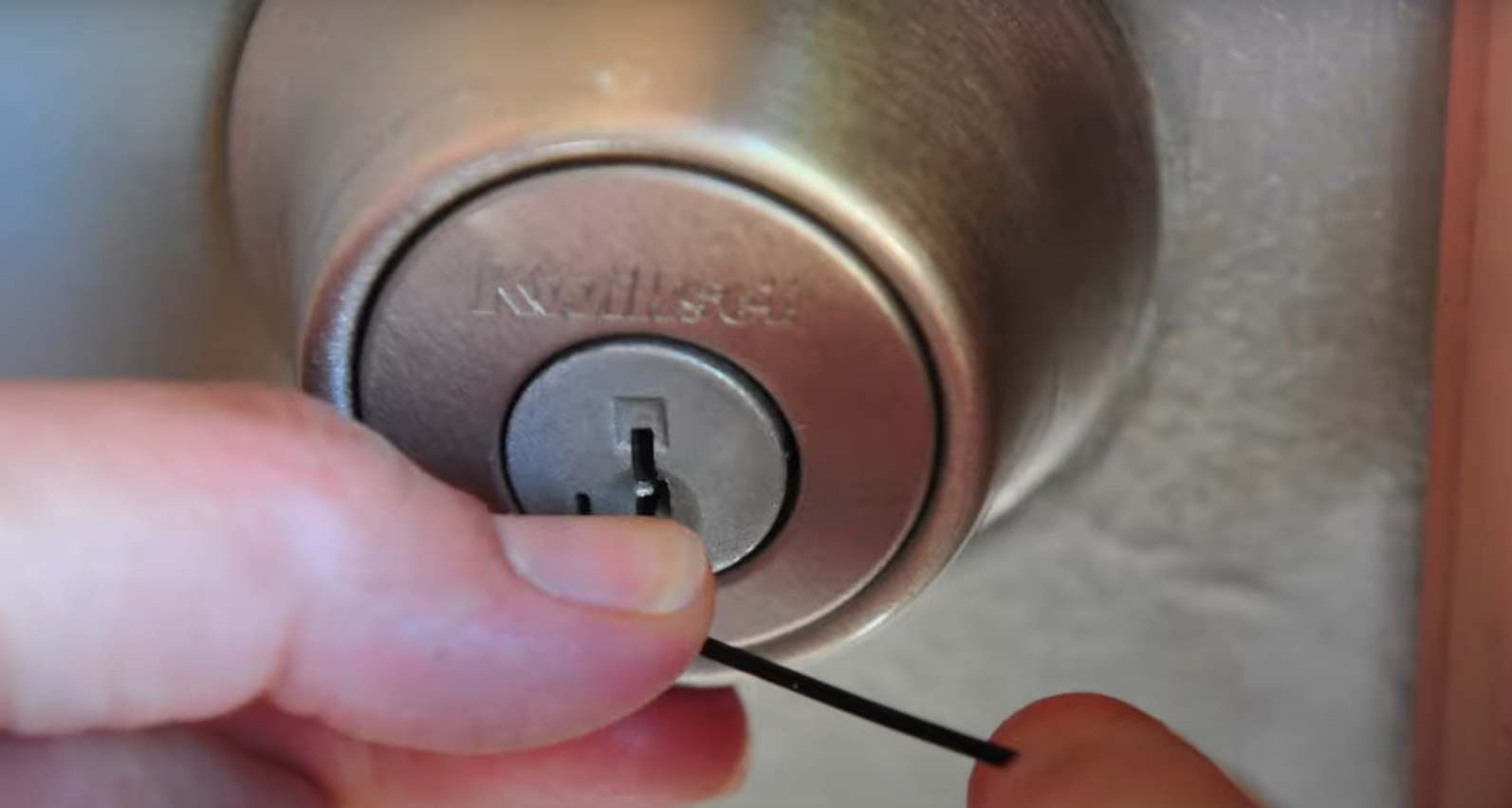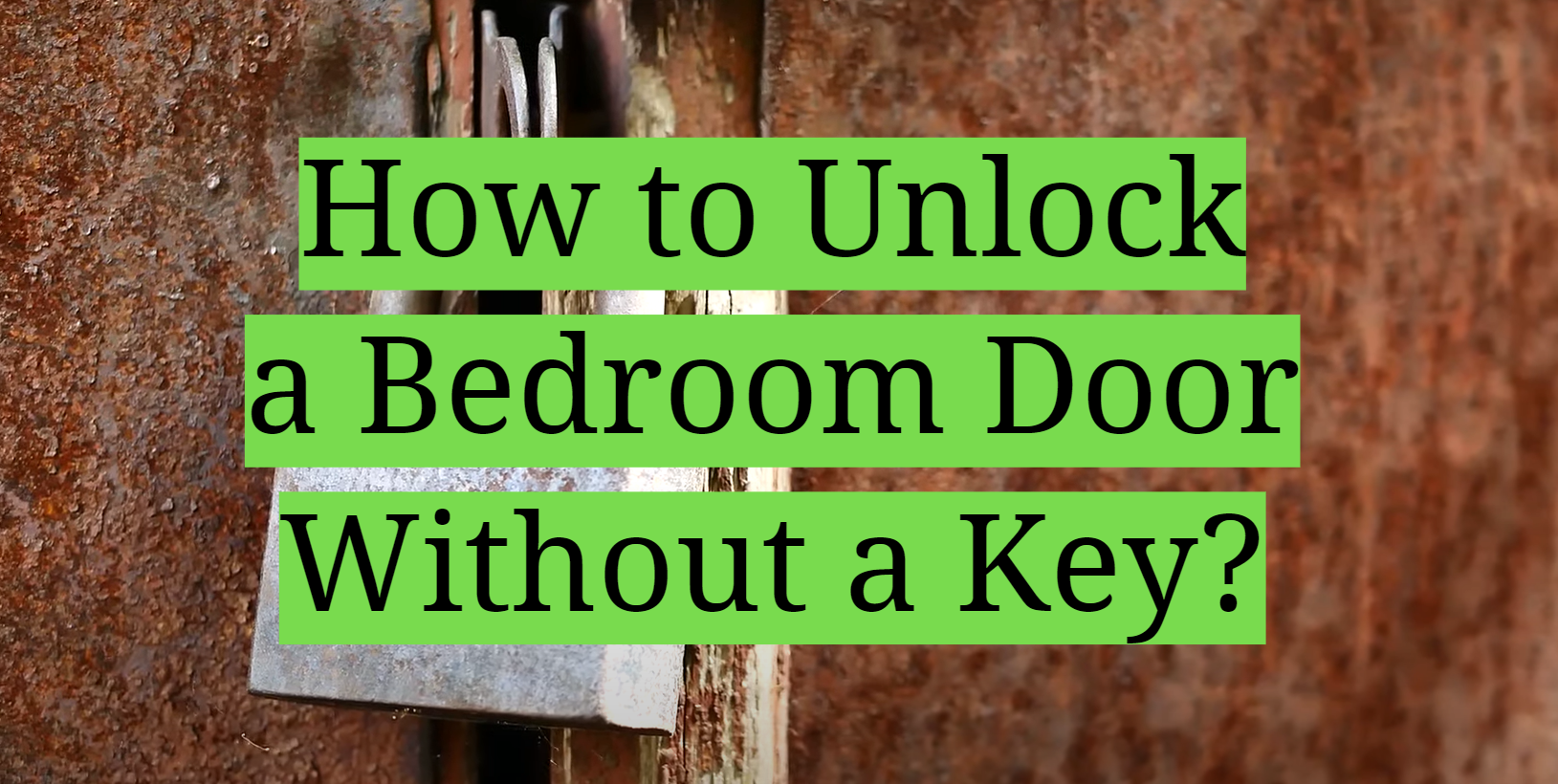Keyless Bedroom Door Lock

A keyless bedroom door lock, also known as a smart lock, is a modern security device that replaces traditional key-based locks with electronic mechanisms for access control. It offers a convenient and secure way to manage entry to your bedroom.
Types of Keyless Bedroom Door Locks
Keyless bedroom door locks are available in various forms, each offering distinct features and functionalities:
- Keypad Locks: These locks use a numeric keypad for entry, requiring users to input a specific code to unlock the door. They are typically easy to install and use, making them popular for bedrooms.
- Bluetooth Locks: These locks utilize Bluetooth technology to communicate with a smartphone app. Users can unlock the door using their smartphone, and some models even allow for remote access and scheduling.
- Smart Locks: Smart locks offer advanced features, including integration with home automation systems, remote control, and real-time monitoring. They can be accessed through smartphone apps, voice assistants, or key fobs, offering enhanced security and convenience.
Benefits of Using a Keyless Bedroom Door Lock
Keyless bedroom door locks offer several advantages over traditional locks:
- Convenience: No need to carry keys, eliminating the hassle of misplacing them or being locked out.
- Enhanced Security: Keyless locks are more resistant to traditional lock-picking techniques, offering greater protection against unauthorized entry.
- Flexibility: Allows for access control management, enabling users to grant temporary access to others, such as house cleaners or guests.
- Remote Control: Some smart locks enable remote access and control, allowing users to unlock the door remotely through their smartphones or other devices.
- Audit Trail: Many keyless locks keep a record of access events, providing an audit trail for security purposes.
Security Features of Keyless Bedroom Door Locks
Keyless bedroom door locks incorporate various security features to protect your privacy and valuables:
- Password Protection: Most locks require a unique password or PIN code for access, preventing unauthorized entry.
- Auto-Locking Mechanism: Some locks automatically lock after a set period, ensuring the door is always secure.
- Tamper Detection: These locks often include tamper detection sensors that alert users to any attempts to force the lock or damage the door.
- Anti-Pick Technology: Keyless locks employ anti-pick mechanisms to make it more difficult for unauthorized individuals to gain access.
Choosing the Right Keyless Bedroom Door Lock
Upgrading your bedroom door with a keyless lock offers numerous benefits, including enhanced security, convenience, and a modern touch. However, with a wide range of options available, selecting the right keyless lock for your needs can be overwhelming. This guide will provide you with valuable insights to make an informed decision.
Types of Keyless Bedroom Door Locks
There are several types of keyless bedroom door locks, each with unique features and functionalities. Understanding these differences will help you choose the best option for your specific requirements.
- Keypad Locks: These locks utilize a numeric keypad for entry, allowing you to program a specific code for access. Keypad locks are generally affordable and easy to use, making them a popular choice for homeowners. They often offer features like auto-locking, multiple user codes, and low battery alerts.
- Smart Locks: Smart locks connect to your home’s Wi-Fi network, enabling remote control and integration with other smart home devices. They often offer advanced features like keyless entry via a smartphone app, activity logs, and remote unlocking capabilities. Smart locks are typically more expensive than keypad locks but provide greater convenience and security.
- Biometric Locks: Biometric locks utilize fingerprint scanning or facial recognition technology for access control. They offer enhanced security by verifying the identity of the user before granting entry. Biometric locks are generally more expensive than other types but provide a high level of security.
- Bluetooth Locks: Bluetooth locks use Bluetooth technology to connect with your smartphone for unlocking. They are a more affordable alternative to smart locks and offer convenient keyless entry. However, they require you to be within Bluetooth range of the lock for access.
Factors to Consider When Choosing a Keyless Bedroom Door Lock
When selecting a keyless bedroom door lock, several factors should be taken into account to ensure the best fit for your needs.
- Budget: Keyless door locks range in price from affordable keypad locks to high-end smart locks with advanced features. Determine your budget beforehand to narrow down your options.
- Ease of Use: Consider the level of technical expertise required to operate the lock. Keypad locks are generally user-friendly, while smart locks may require more setup and familiarity with smartphone apps.
- Compatibility with Existing Smart Home Systems: If you have an existing smart home system, ensure the lock is compatible with your preferred platform (e.g., Amazon Alexa, Google Home, Apple HomeKit).
- Security Features: Consider features like auto-locking, multiple user codes, tamper alerts, and deadbolt strength to ensure the lock provides adequate security.
- Battery Life: Keyless locks rely on batteries, so consider the battery life and the ease of replacing them. Some locks offer low battery alerts to prevent lockouts.
- Installation: Check if the lock is compatible with your existing door hardware and if you are comfortable with the installation process. Some locks require professional installation, while others are DIY-friendly.
Comparison of Popular Keyless Bedroom Door Lock Brands
| Brand | Type | Features | Price Range | Schlage | Keypad, Smart | Auto-locking, multiple user codes, smartphone app control, compatibility with smart home systems | $150-$300 | Kwikset | Keypad, Smart | Auto-locking, multiple user codes, smartphone app control, compatibility with smart home systems | $100-$250 | Yale | Keypad, Smart, Biometric | Auto-locking, multiple user codes, smartphone app control, fingerprint scanning, facial recognition | $200-$400 | August | Smart | Smartphone app control, remote unlocking, activity logs, compatibility with smart home systems | $200-$300 | Ring | Smart | Smartphone app control, remote unlocking, activity logs, compatibility with smart home systems | $150-$250 |
|---|
Tips for Choosing the Right Keyless Bedroom Door Lock
Here are some tips to guide you in selecting the best keyless bedroom door lock:
- Read Reviews: Consult online reviews and user feedback to gain insights into the reliability, ease of use, and performance of different lock models.
- Compare Features: Carefully compare the features of different locks to ensure they meet your specific needs and preferences.
- Consider Your Lifestyle: Think about your daily routines and how a keyless lock would integrate into your lifestyle.
- Seek Professional Advice: If you are unsure about the best lock for your situation, consult a security professional for personalized recommendations.
Installation and Usage of Keyless Bedroom Door Locks

Installing and using a keyless bedroom door lock is a straightforward process that enhances security and convenience. This section will guide you through the installation process, explain different programming methods, and highlight the importance of regular maintenance for optimal performance.
Installation of Keyless Bedroom Door Locks
The installation process for keyless bedroom door locks typically involves a few simple steps, but it’s essential to consult the manufacturer’s instructions for specific details. Generally, the process involves:
- Removing the Existing Door Knob: Begin by removing the existing door knob and latch. This usually involves unscrewing the screws on the inside of the door.
- Installing the New Latch: The next step is to install the new latch plate that comes with the keyless lock. The latch plate secures the lock to the door frame.
- Connecting the Lock to the Door: Align the keyless lock with the latch plate and attach it to the door using the provided screws.
- Connecting the Battery: Most keyless locks require batteries for operation. Install the batteries according to the manufacturer’s instructions.
- Testing the Lock: After installation, test the lock by trying to open and close the door using the keyless entry method.
Programming and Using Keyless Bedroom Door Locks
Programming a keyless bedroom door lock involves setting up access codes or using other methods for unlocking the door. Common programming methods include:
- Using a Programming Code: Some locks require a programming code to set up user codes. The programming code is typically found in the user manual.
- Using a Smartphone App: Many modern keyless locks can be programmed and controlled using a dedicated smartphone app. This allows you to add or delete user codes, manage access permissions, and even monitor lock activity.
- Using a Keypad: Keyless locks with a keypad require users to enter a unique code to unlock the door. These codes can be easily changed and updated.
Once programmed, using a keyless bedroom door lock is a simple process. The user typically needs to:
- Enter the Code: If using a keypad, enter the correct code to unlock the door.
- Use a Smartphone App: If using a smartphone app, open the app and unlock the door remotely.
- Use a Keycard: Some keyless locks accept keycards for access. Swipe the keycard against the reader to unlock the door.
Maintenance of Keyless Bedroom Door Locks
Regular maintenance is crucial for ensuring the longevity and functionality of your keyless bedroom door lock. Here are some essential maintenance tips:
- Battery Replacement: Replace the batteries when the lock indicates low battery. This will prevent the lock from malfunctioning.
- Cleaning the Keypad: Regularly clean the keypad with a soft cloth to remove dirt and debris. This helps ensure accurate code entry.
- Lubrication: Apply a small amount of lubricant to the lock mechanism to prevent it from becoming stiff or jammed.
- Checking for Damage: Inspect the lock for any signs of damage, such as scratches or cracks. If you notice any damage, consult the manufacturer’s instructions or contact a locksmith.
